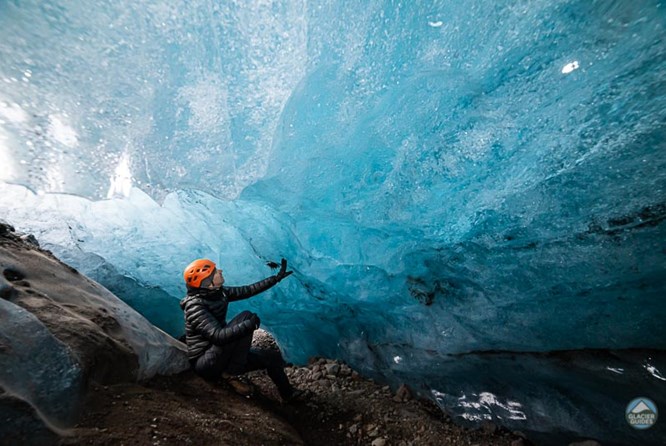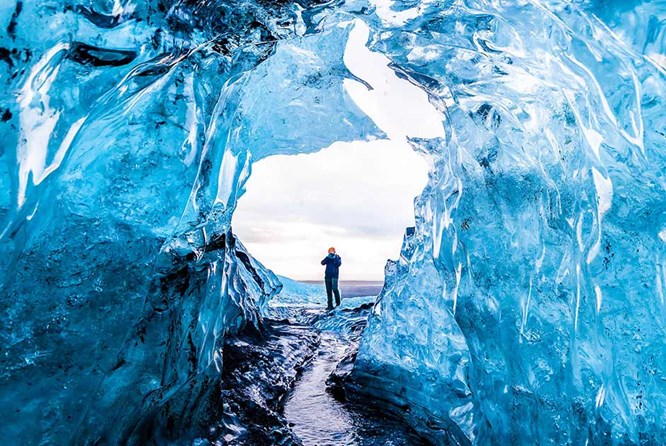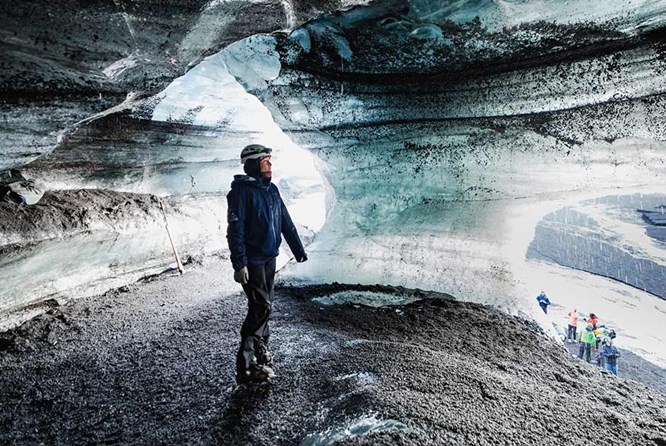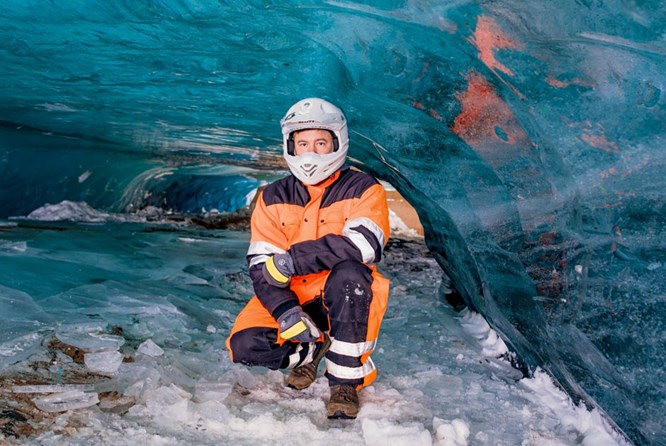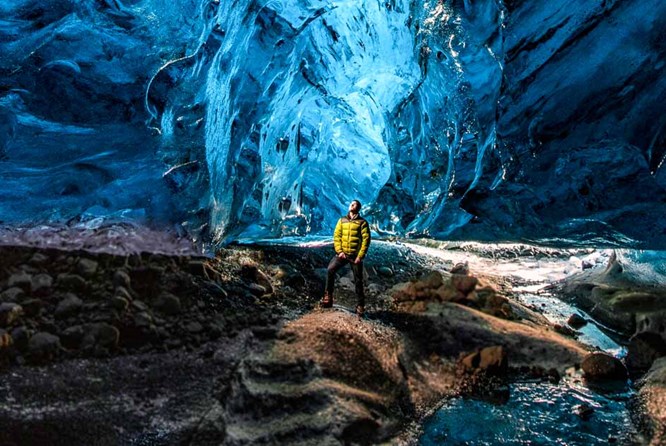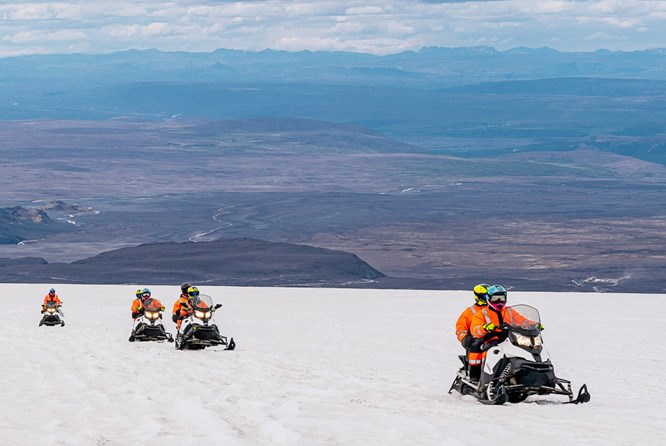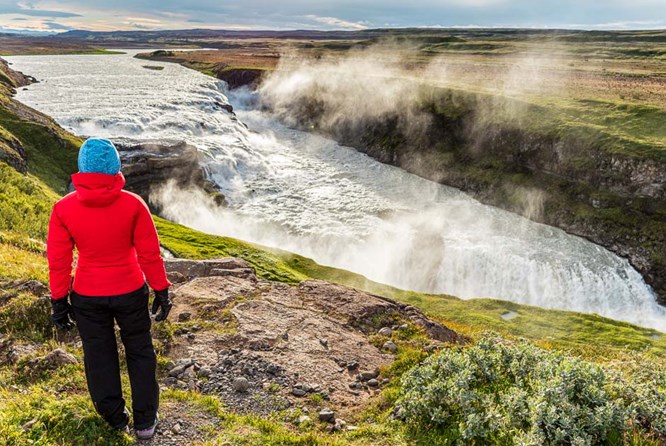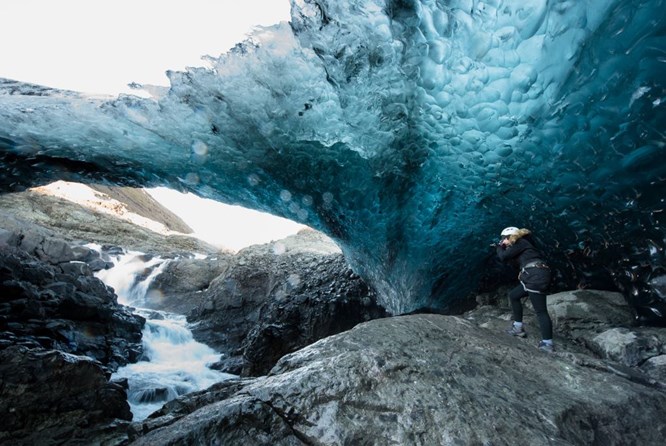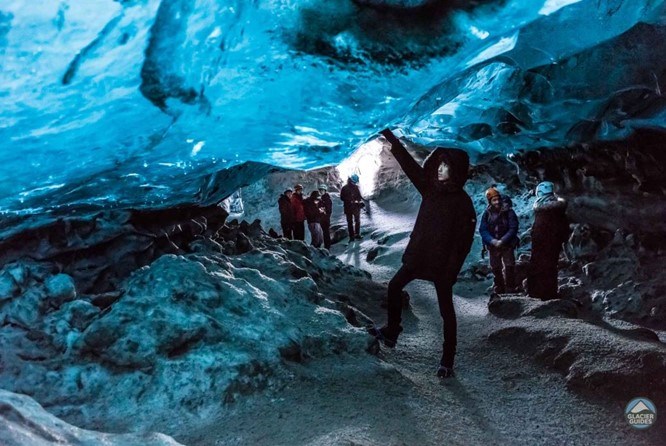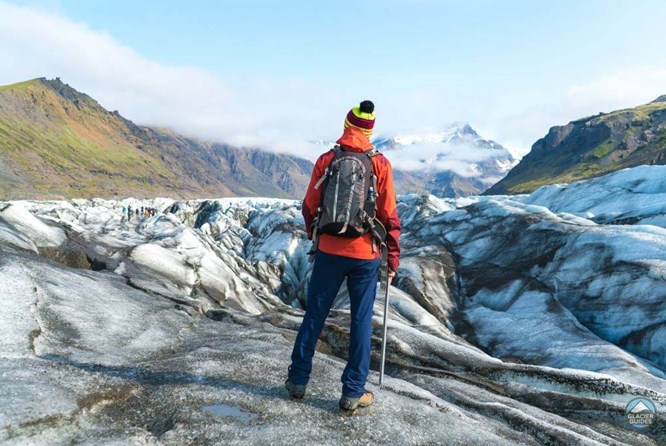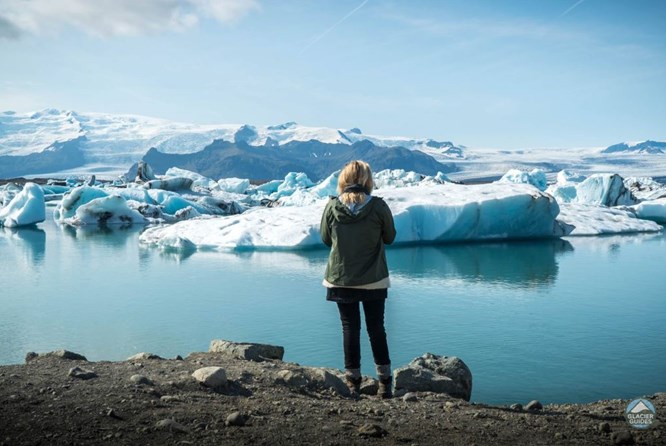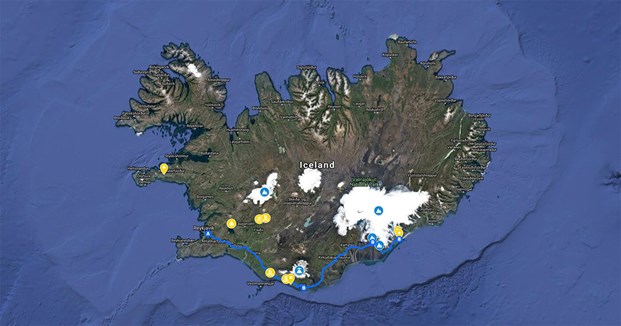Explore natural glacier ice caves in Iceland. An ice cave is a rare, mysterious wonder found in the dynamic Icelandic nature. We offer ice caving tours to two glaciers in Iceland - Myrdalsjokull glacier and Vatnajokull glacier.
Browse our selection of natural ice cave tours
Day Tours
Multiday Tours
The Essential Guide To Glacier Ice Caves In Iceland
Natural ice caves are ever-changing glacial phenomena that have created many dream-fulfilling destinations with the unimaginably mesmerizing colors and textures. They look like the work of the diligent craftsmen striving to impress the nature lovers with brilliant ideas and exquisite skills. Inside the ice caves, you will see the incredible nooks, the attractive crannies, the exotic textures, the stunning colors in a range of transparency, and other features. The distinction of each ice cave is irreplaceable.
What Is An Ice Cave and How Is it Formed?
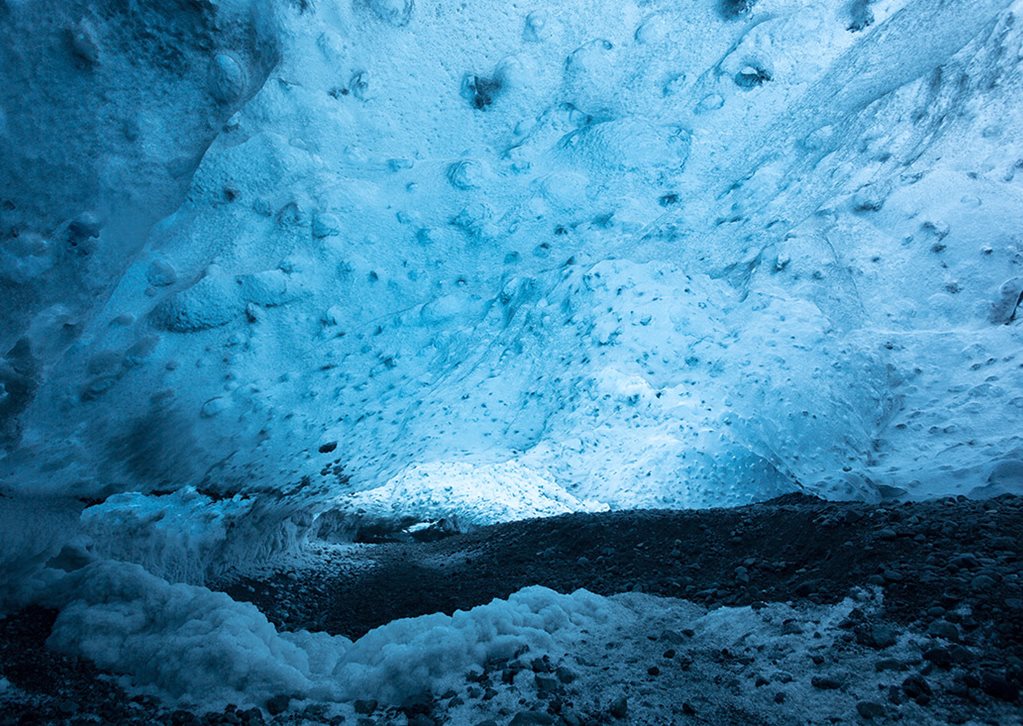
The Formation of The Ice Caves Takes Place In A Mysterious Way.
The ice caves in Iceland mainly refer to the glacier ice caves. Strictly speaking, since the Icelandic ice caves are formed entirely inside the glaciers and are completely natural phenomena, the term “glacier ice cave” is more accurate. In general, an ice cave can be a regular cave that has a large quantity of ice inside it and it doesn’t need to be 100% made out of ice.
The formation of the ice caves takes place in a mysterious way in which the seasonal melt/freeze cycle plays a major role. The cycle’s huge influence is carried out by summer’s warmer temperatures and increased sunlight then by winter’s low temperatures and cooling down effect.
Starting from spring, the existing ice cave will be eroded by the warmer climate and the heat from increased sunlight. The meltwater on the glacier surface powerfully drains through moulins and travels all the way to the base of the glacier. The rivers keep eroding the glacier ice and carving the natural drainage conduits up to 10 meters (32.8 feet) wide, leaving the void surrounded by crystal ice walls and ceilings. Voila! An ice cave has been shaped. Followed by autumn and winter, lower temperatures bring cool air to further harden the new ice caves and the glacier rivers start to retract. That’s when the new ice caves begin to stabilize. This is also why most natural ice caves are only available to visit from November to March. Only until then are the ice caves safe to explore - with a professional glacier guide, of course.
A perfect example for this type of ice caves is the Crystal Ice Cave at Vatnajokull. It forms every year in a similar way and at close locations.
Why Is Glacier Ice Blue?
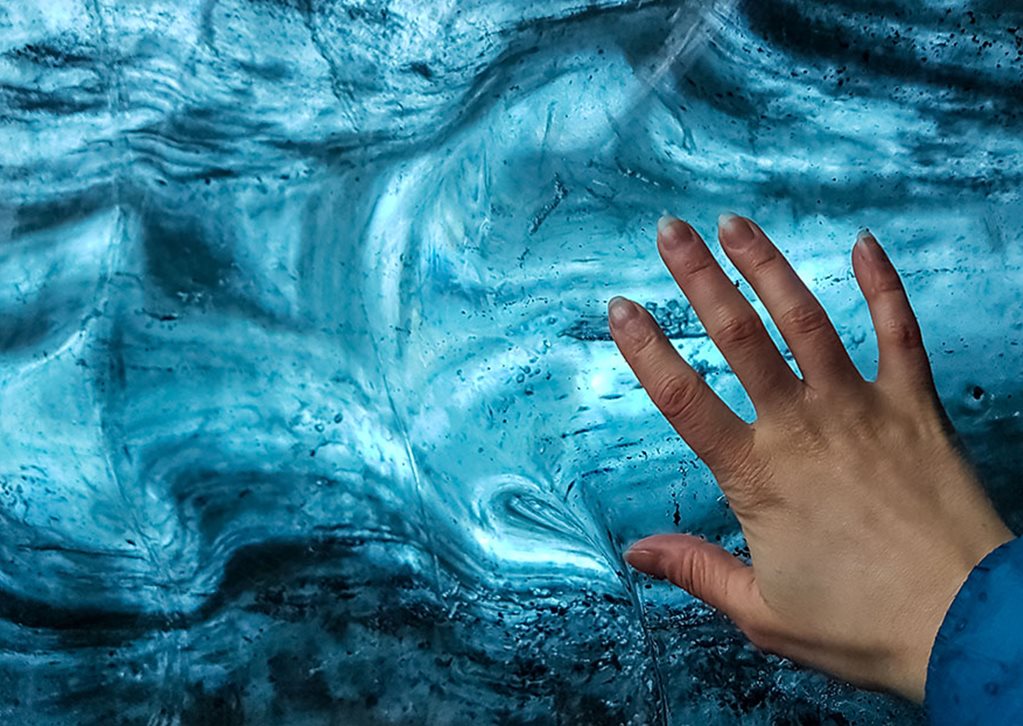
The Mesmerizing Shades Of Blue in Katla Ice Cave Within Myrdalsjokull Glacier.
Entering an enchanting ice cave feels like going into an exciting alien environment that draws you in. The first and most significant feature you will notice is the shades of blue. Ice caves are known for their distinctive blue color, although not all ice caves are blue.
Glacier ice is much denser and thicker than regular ice, for example, the ice cubes stored in your freezer. It’s a process of centuries, even millennium, for snow to transform into glacier ice. It starts with snow remaining in the same area year-round. When enough pre-existing snow accumulates to transform into ice, it forms an ice layer. Each year, new layers of snow bury and compress the previous layers forcing the previous layers to re-crystallize. During this process, the ice grains begin to grow and the air between the grains are being pushed out causing the snow to slowly compact. So the density of the ice increases. Over time, the ice crystals become so much compressed that there’s hardly any air left between the ice crystals.
Snow looks white because it contains air, which scatters and reflects the full spectrum of light. That’s why the human eyes see the color of snow as “white.” But in glacier ice there’s rarely any air, the light can enter without any disturbance allowing the ice to absorb the light. Glacier ice can absorb the long-wave red spectrum six times more than of the blue spectrum. The deeper the light goes inside glacier ice the more red spectrum the light losses. The lack of the reflected red waves in glacier ice is what makes the human eye perceive the color as “blue.”
Different Ice Caves In Iceland
Crystal Ice Cave
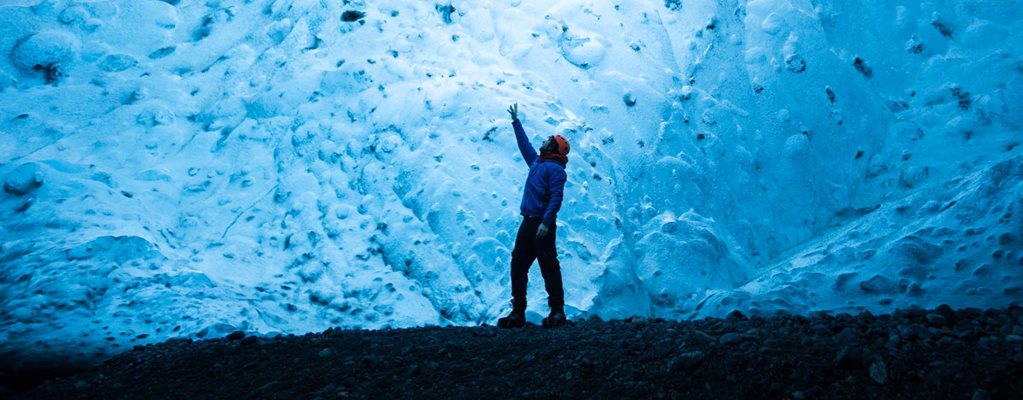
Visiting the Awe-inspiring Crystal Ice Cave At Vatnajokull.
One of the most stunning ice caves is the Crystal Ice Cave in Vatnajokull National Park.
To name the ice cave “Crystal” is to capture and express the beauty of the ice walls and ceilings that are translucent enough for the light to come through them. Beneath the ceiling, you will find yourself standing in an amazing environment as if they are made of semi-transparent glass.
Since 2011, the Crystal Ice Caves have formed every year at very close locations because they were crafted by the stream of the same large glacial river each summer. Every year, the newer ice caves always replace the older ones, but they are distinctively different except sharing only one indescribable feature - the iridescent blue ice. It’s one of the most photogenic scenes in Iceland. And you will have enough time for photography during a guided experience. As one of the most awesome, must-do experiences in Iceland, visiting Crystal Ice Cave will be unforgettable. The closest departure to this natural wonder is from Jokulsarlon Glacier Lagoon, a location that is a mesmerizing wonder itself. There are multiple departures from there every day!
Katla Ice Cave
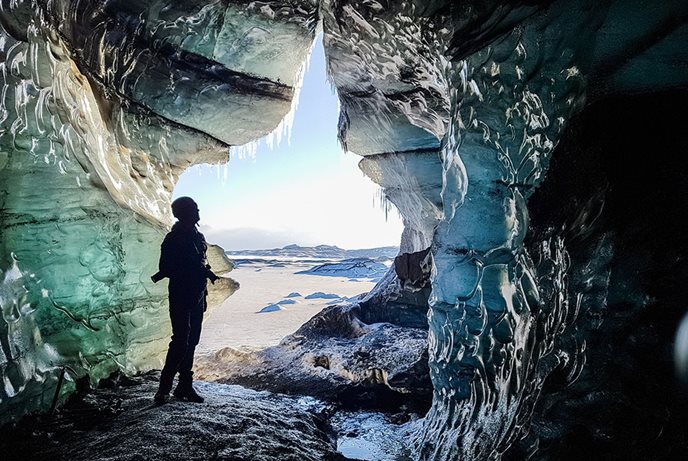
Visiting The Ice Cave Under Katla Volcano.
Katla Ice Cave was only discovered a couple of years ago and it’s already one of the most famous ice caves in Iceland. To quote the local’s comment on this special one, “it’s a cool ice cave that people can visit all year around.”
Its location is right on the mighty Myrdalsjokull glacier, the fourth largest glacier in Iceland. Beneath it, there lies the notorious “monster volcano” Katla. The extreme condition of this area has created many spectacular sceneries. As one of these spectacles, the glacier that created Katla Ice Cave stands above an open, hilly area filled with black volcanic sands. In winter, when the land is covered by snow, the striking contrast between volcanic black and icy white resembles a land from an alien planet.
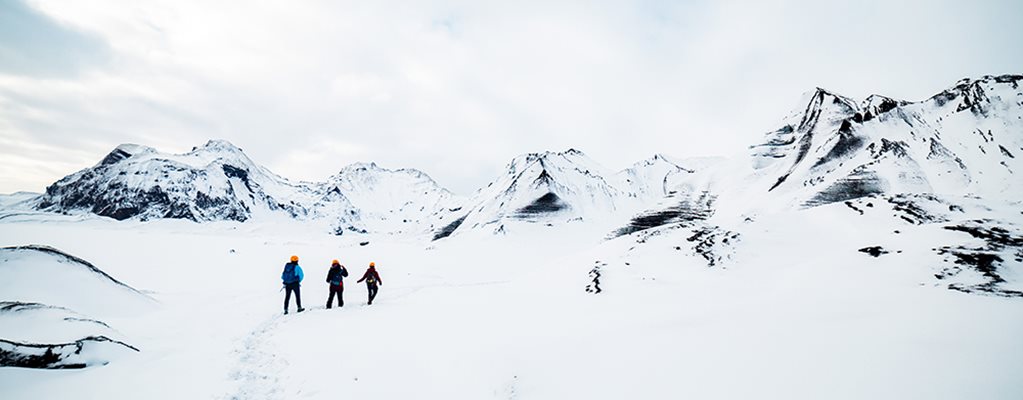
The Striking Contrast Between Volcanic Black And Icy White Resembles A Land From An Alien Planet.
In front of the opening to Katla Ice Cave, you will see the unusual colors, the beautiful layers, the streaming glacial waterfalls, and the intricate textures in magnificent volume. The veins of the black volcanic ash swirl together with the ice making a photographer's wildest dream come true. Mixed with some of the rare colors found in nature - glaring snow white and metallic icy blue - the ice cave surface presents a unique look and is quite a spectacle to witness.
Katla Ice Cave sometimes is also referred to as “Nature Ice Cave in Myrdalsjokull.” Because it’s entirely natural and is subject to change over the course of time, don’t wait around for another time or another chance. If you are based in Reykjavik, Hveragerdi, Hella or Hvolsvollur, there are tours to Katla Ice Cave offering free pickups from many hotels. On your way, you will stop by the astonishing Seljalandsfoss and Skogafoss waterfalls. Or you can join the group directly at ICEWEAR / Vik Wool Store if you are self-driving or already in Vik. Then, you get to take a thrilling super jeep ride to see the pristine glaciers.
Natural Ice Cave In Vatnajokull
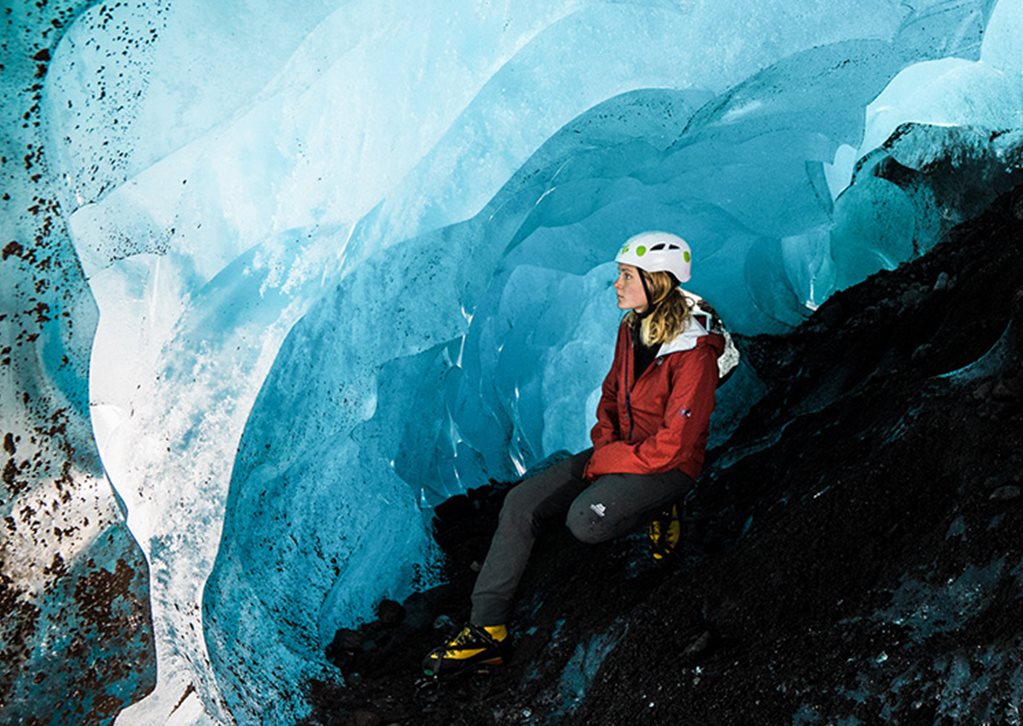
Into The Glacier At Vatnajokull.
The glacier landscape in Iceland is an epic, abstract composition with the rugged ice, the interweaving crevasses, and the veins of volcanic ash. The best representation for this kind of brilliant icescape is Vatnajokull, which is the most voluminous and one of the largest glaciers in Europe and it covers about 8% of Iceland land area. There are numerous outstanding glacier tongues stretching out from the Mighty Vatnajokull, and Falljokull glacier tongue is one of them. Underneath it, you will find an ice cave that has mesmerizing shades of blue glistering silently. From a milky azure, a saturated cerulean, a tint of ultramarine to a tone of turquoise, this ice cave has a wide range of blue colors.
An even more terrific scene to see is when sunlight shines through some parts of the ice cave, the shades and hues will change. It’s only for those who are to seize the day and to immerse in the moment of the rare wonder. To visit a natural ice cave in this area is a fantastic experience in which you will do a short glacier hike in the middle of the stunning landscape.
Langjokull Ice Cave
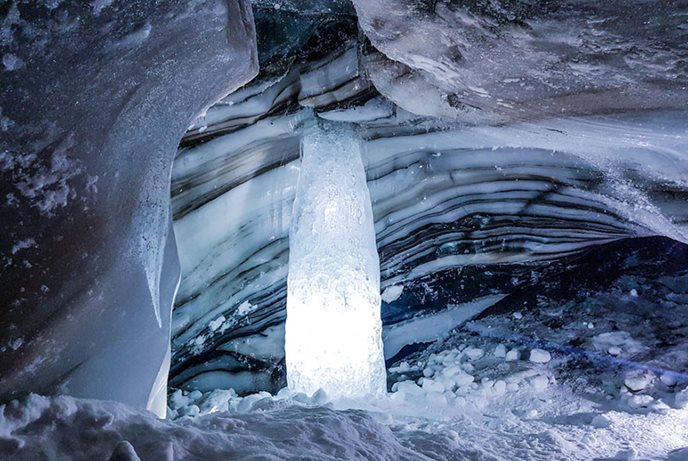
Langjokull Ice Cave Was Famous For Its Thick, Layered Ice Formation And The Uncommon Electric, Neon Blue Colors.
Langjokull is the second largest glacier in Iceland right after Vatnajokull glacier. It covers an area of 935 square kilometers (361 sq mi) and is one of the most popular sites for glacier super jeep tours and snowmobile adventures, which are also the few ways available to reach the ice cave in the glacier.
The ice cave in Langjokull was found in the winter of 2016-17. When it’s just discovered, people were immediately amazed by its uniqueness compared to other wonderful ice caves. Langjokull Natural Ice Cave was famous for its thick, layered ice formation and the uncommon electric even neon blue colors. When you enter the quiet ice cave with a torchlight, you will see the ice surface glisten with a spread of otherworldly colors, like the well-cut diamonds sparkle under the bright light.
In the winter of 2017-18, people even found a frozen river in the ceiling and a frozen waterfall in the middle of a larger area. This amazing ice cave changed a lot after the first year of discovery and is monitored closely.
Langjokull Man-made Ice-tunnel
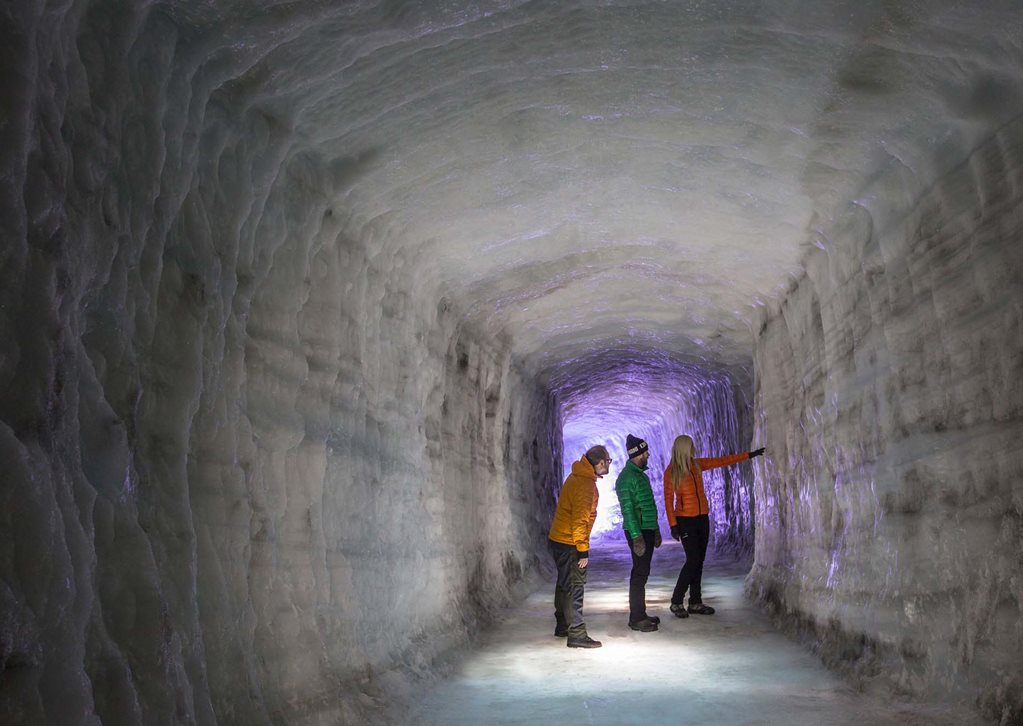
The world’s largest man-made ice cave is found at Langjokull glacier.
The world’s largest man-made ice cave is found at Langjokull glacier. It’s open for visiting on June 1st, 2015 after a 14-month digging in which 7,000 tonnes of ice was removed. Langjokull ice tunnel is 500-meter long and is open to the public all year. More fantastically, it even has a little chapel built inside where many couples choose to tie the knot ever since it’s established.
Ice Cave Exhibition In Perlan
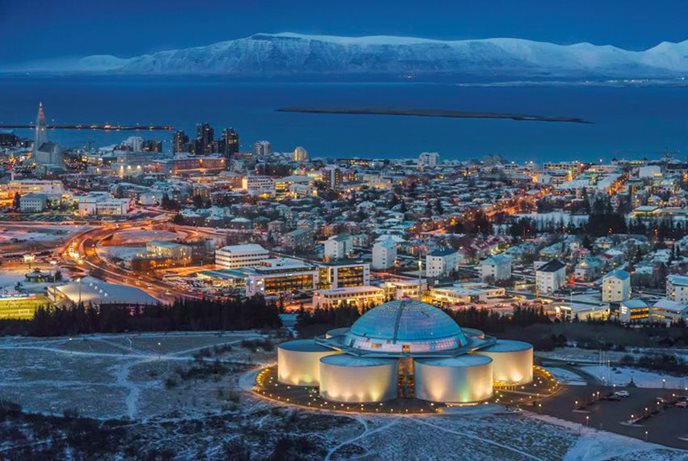
Perlan Is An Architecture Situated On Top Of Oskjuhlid Hill. (Photo Credit: Perlan Museum)
If you are in Iceland during a time or in a weather that’s not suitable for visiting the natural ice caves, you are not running out of the option to learn about the ice caves and to get a feel of the special ice formation. In Reykjavik, you can visit the Perlan Museum. Perlan is an architecture situated on top of Oskjuhlid hill. It just launched a Glacier And Ice Cave Exhibition in which you can explore a 100-meter long ice cave meanwhile experience a glacial environment in an informative way.
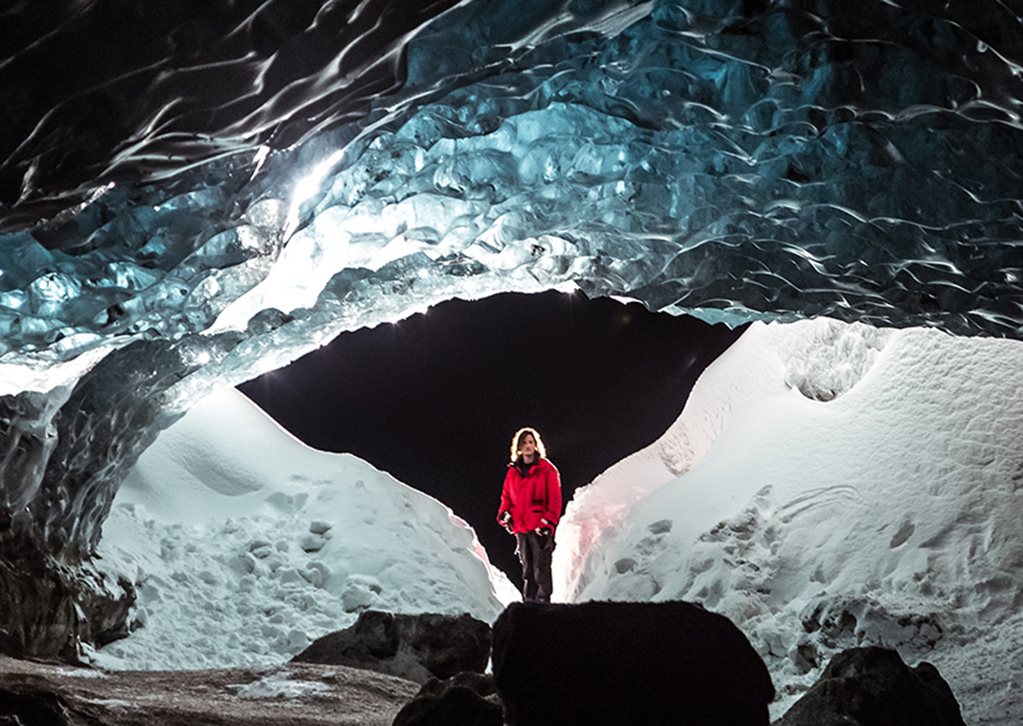
Visiting A Natural Ice Cave In Iceland
These are all suitable for planning your day tours in Iceland. And most ice caves tours are operated in winter which is even more wonderful because there’s a great chance you can see the Northern Lights dancing in the sky.
The Ice Cave Glaciers In Iceland
Glaciers cover 11% of the land area and is a significant component of the climate, geology, and landscapes in Iceland. No other country in the world showcases glaciers better than the island nation.
Iceland is home to many magnificent glaciers including Europe’s largest glacier Vatnajokull, and Eyjafjallajokull, the glacier that attracted immense global attention during its 2010 eruption.
Most of the glacier tours are operated on the top five glaciers in Iceland.
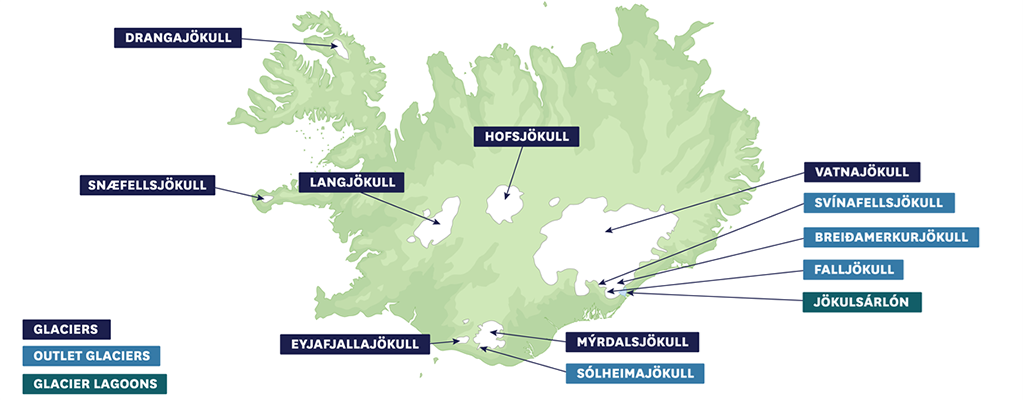
Glaciers In Iceland
To be more specific, the most visited locations where ice caves were formed quite often - we here refer to as “the ice cave glaciers” - are Langjokull, Kotlujokull glacier tongues on Myrdalsjokull, Breidamerkurjokull and Falljokull glacier tongues on Vatnajokull.
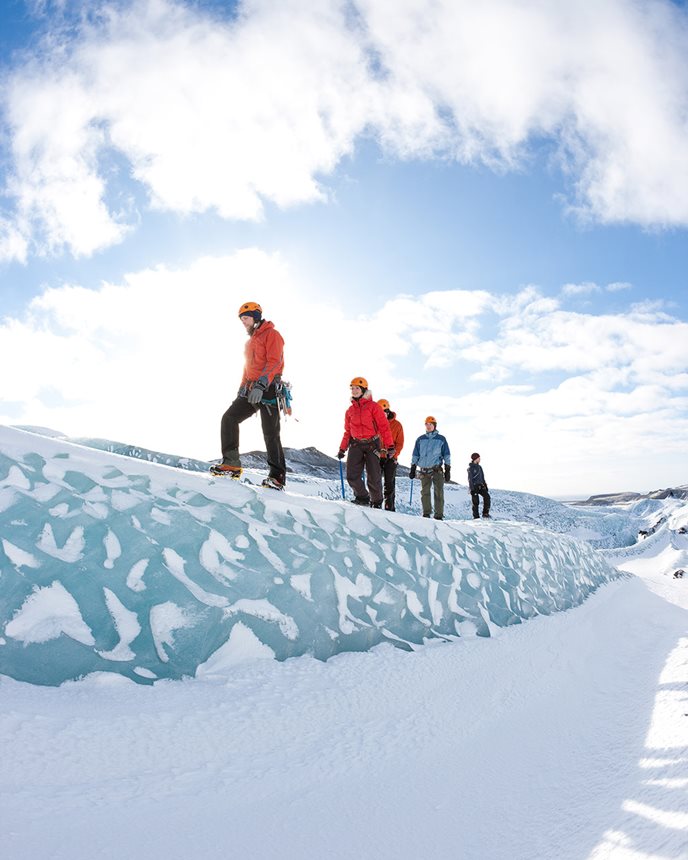
Blue Ice - Glacier Hiking From Solheimajokull Outlet Glacier
Ice Caving & Glacier Hiking
Glacier Hiking & Ice Caving Combo Tour: Into The Glacier | From Skaftafell
Glacier hiking is a very popular activity among all the exhilarating glacier adventures in Iceland. And Some ice caving tours require a short glacier hike. Gearing up with crampons on your sturdy hiking boots and wearing all the necessary glacier outfits and helmet, you will walk on the otherworldly landscape like an astronaut who just land on an alien place.
Ice caving and glacier hiking together offer a fantastic, full glacier experience. It’s highly recommended for those who self-drive in Iceland. With so much to see and to visit, the glacier activities can enrich your journey with a special taste of Iceland.
Ice Caving & Sightseeing
Since most glaciers that are suitable for ice caving and glacier hiking are located in the epic South Iceland, a majority of visitors like to add some glacier activities in the middle of their South Coast sightseeing trips.
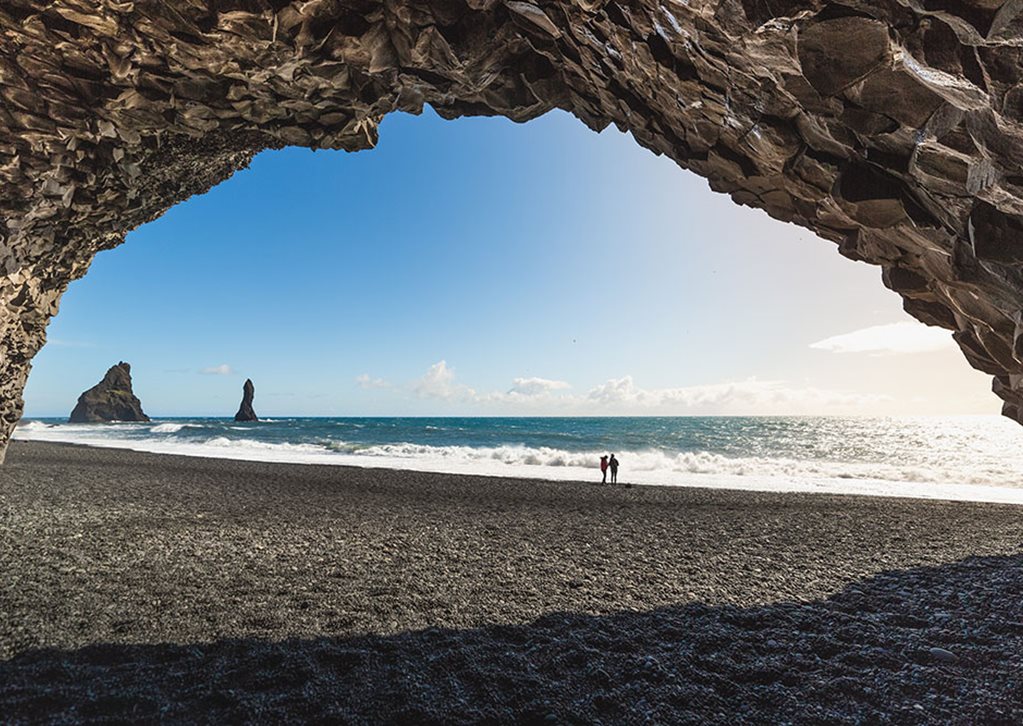
Reynisfjara Black Sand Beach In South Iceland
The South Coast of Iceland is home to a diverse range of landscapes covering many must-see attractions. On the rim of the southern lowland, several glacier rivers flow to the ocean and carve the black sand desert with their gorgeous estuaries. Looking North, the mountains and the glaciers on the highland rise up to 1000 to 1500 meters above sea level and some of the most attractive waterfalls can be found in there. At the southernmost tip, you will visit Reynisfjara Black Sand Beach that has a huge quantity of the geometric-looking basalt formation facing the sea. The stunning Jokulsarlon Glacier Lagoon and the Diamond Beach are ahead to the East via Ring Road and in there you can get even closer to the ancient glacier ice on a lagoon boat tour. Within 100 kilometers northeast from Reykjavik is the famous Golden Circle where you can reach Langjokull glacier from one of the three Golden Circle attractions - the magnificent Gullfoss waterfall.
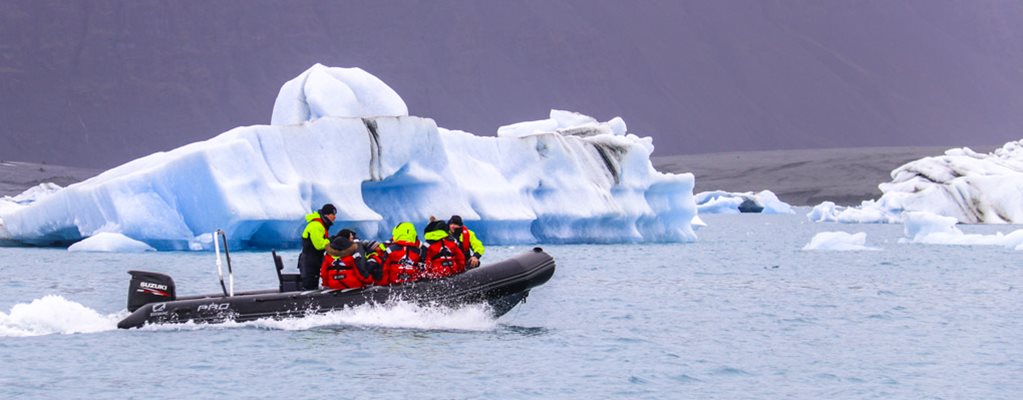
On Board Of The Zodiac Boat Visiting Jokulsarlon Glacier Lagoon
It’s best to plan a multi-day tour with so much to see and to do. With a three-day itinerary, you can travel from Reykjavik to the beautiful Golden Circle, and then head South to enjoy the most scenic journey along the coast all the way to Jokulsarlon Glacier Lagoon and explore the mesmerizing Crystal Ice Cave on Vatnajokull. If you have four or five days in Iceland, the plans can be even more comprehensive because you can include the wonderful Snaefellsnes Peninsula route in your journey. The Icelandic people say Snaefellsnes Peninsula is a “little Iceland” because it has all the essence of the Icelandic nature.
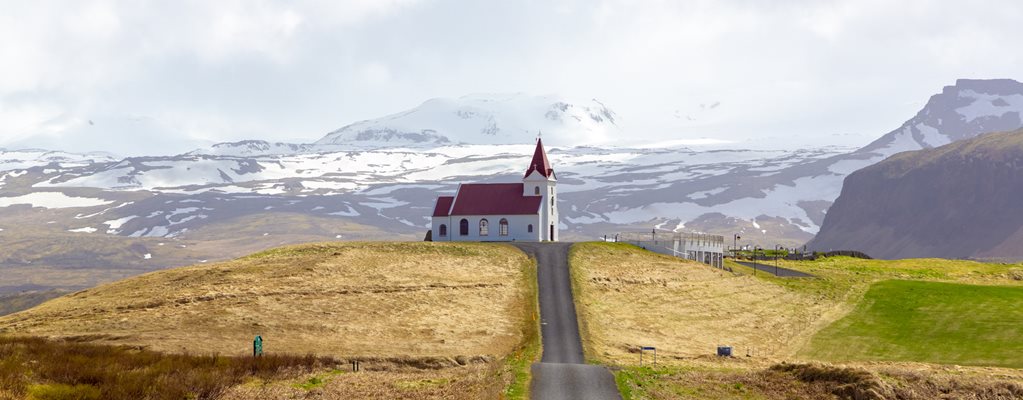
Snaefellsnes Peninsula Is Nicknamed "Little Iceland."
What To Be Aware Of When You Visit An Ice Cave
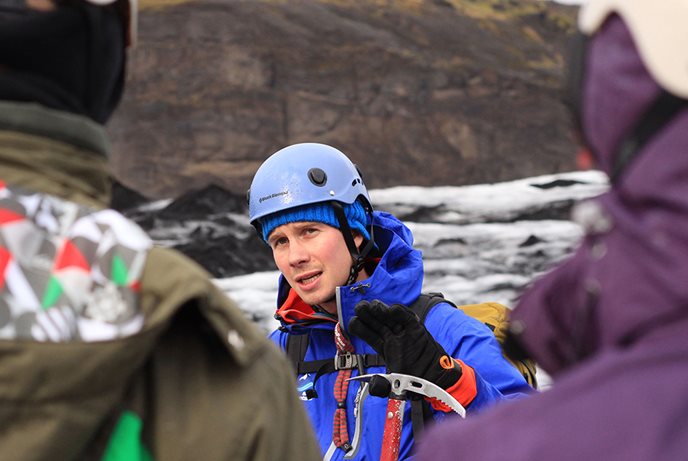
Safety Instruction From An Experienced Glacier Guide
The first thing the visitors must know is that never visit an ice cave without a glacier guide. The ice caves are usually located in a higher place on the glaciers. It either requires a short glacier hike or a brief ice climbing, both can be dangerous if you are not following the track mapped by the glacier guide who’s trained and experienced in everything related to glaciers. There can be cracks, crevasses and falling down can be fatal. With a well-trained eye, the glacier guide is familiar with his guiding area and is always on a full alert about the weather changes.
And, wearing the suitable outfits is essential. On the glacier, the weather can be windier than on the ground. Inside the ice cave, the temperature is always cooler and chillier than the outside. Only dressing in layers and wearing the right fabrics can help you adapt to so many different activities during one trip. This detailed glacier adventure dress guide shares many insights on how to choose the right outfit like a professional.
How To Get To The Glaciers
Many glacier tours depart from Reykjavik or the Capital Region. They often offer free pickups at locations close to numerous hotels and hostels.
If you are staying in Vik, Skaftafell and Jokulsarlon area, they are multiple departures to the glaciers daily from these locations.
---
Map - click to enlarge
